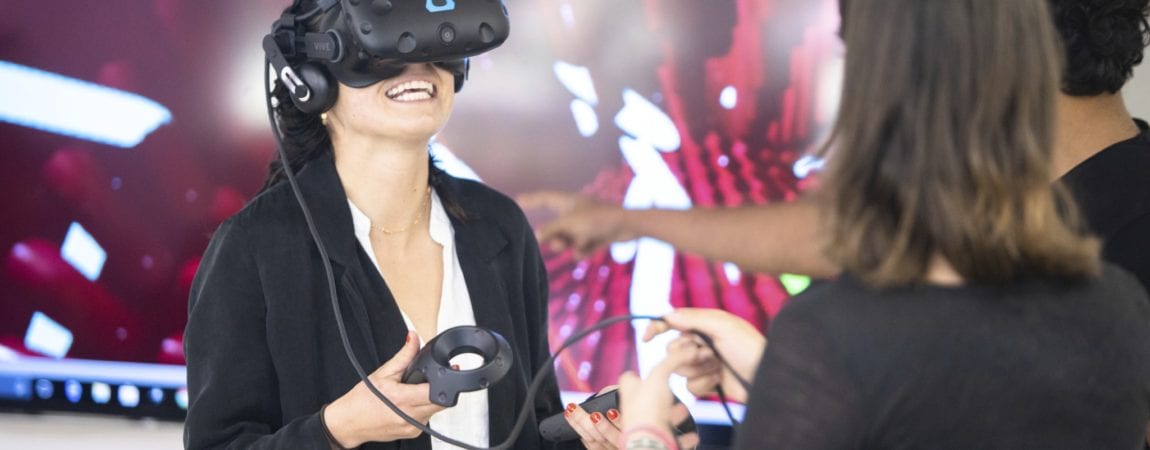

- Advances in Manufacturing
- Robotics, IoT & Wireless Communication
- Autonomous Vehicles
- Transportation: Aero-Space & Vehicular Traffic
- Health & Well-Being: Data-Driven Insights
- Health & Well-Being: New Tools & Therapies
- Cryptocurrency, Financial Technologies & Strategy
- Machine Learning: New Tools & Applications
- VR: New Tools & Applications
Why attend?
- Engineering Today to Lead Tomorrow. Social impact solutions from building hands for children to creating fuel for deep-space space-travel are at your fingertips.
- Networking. Attendees from across industries will come together with Berkeley students, faculty, and alumni while hearing about the latest innovations in engineering technology.
- Industry-Wide Content. From designing collaborative radio networks to reversing tissue aging, attendees have the opportunity to explore trends across multiple engineering fields and concentrations.
- Personalized Experience. Attendees can curate their own personal schedule. With 10 tracks and 85 teams, there’s something for everyone!
Who attends?
Come to our event if you are one of the followings or simply want to meet them:- Engineering/business professionals
- Entrepreneurs
- Faculty
- Industry project advisers
- Prospective industry partners
- Company recruiters
- Corporate decision makers

Here’s a sneak peek of some of the awesome team projects that you can expect:
- Enhancing On-Board Experiences in Autonomous Vehicles: Redefining your future commute lifestyle. Autonomous vehicles are causing a paradigm shift in the mobility sphere that seeks to transform the very core of the status quo. Beyond just developing the algorithms to control the vehicle, there is also a unique opportunity to redefine the user experience for commutes in these self-driving vehicles. The Connected Sensors team has designed a vibration system that can be embedded into the car chairs of the can connect seamlessly to a smartphone. The system is aimed to notify users of any important events (sharp turns, alarms, messages) through vibrational haptic feedback.

- Highway Traffic Modeling to Improve Mobility: Saving your precious time through efficient traffic control strategies. Inefficient traffic management of freeways based on outdated traffic models significantly contributes to traffic congestion. Utilizing traffic flow data available from the California Department of Transportation, we fed it into our Open Traffic Model to create a simulation model for a portion of the I-210 highway most prone to congestion. Upon using Reinforcement Learning to control the model, we have been able to devise better traffic control strategies to optimize traffic flow.

- Vertical Axis Wind Turbines For Small Scale Efficiency: Small Footprint, Large Impact. While wind power has become an increasing contributor to the global energy supply, traditional horizontal axis turbines are poorly suited to small scale applications due to lack of efficiency, danger to avian wildlife and disruptive noise and visual impacts. The Vertical Axis Wind Turbine (VAWT) Team has used computational as well as real-world testing to analyze and improve the performance of vertical axis turbines. In addition to designing and testing a wind concentrator to increase airflow through the turbine, the team has also studied and tested the effects of various multi-turbine arrangements. With these improvements, the team aims to raise the per square foot output of vertical axis turbines to compete with other small scale renewable energy technologies.

Media Contact
Ashley Villanueva Marketing & Recruitment Specialist Fung Institute for Engineering Leadership UC Berkeley College of Engineering (510) 517–4179| ashvillanueva@berkeley.edu8th annual MEng Capstone Showcase: How will engineering leaders change our future? was originally published in Berkeley Master of Engineering on Medium, where people are continuing the conversation by highlighting and responding to this story.


